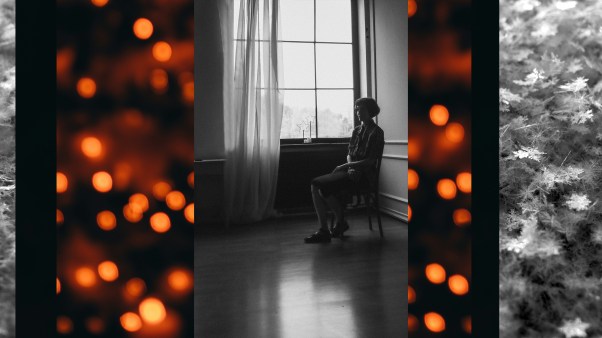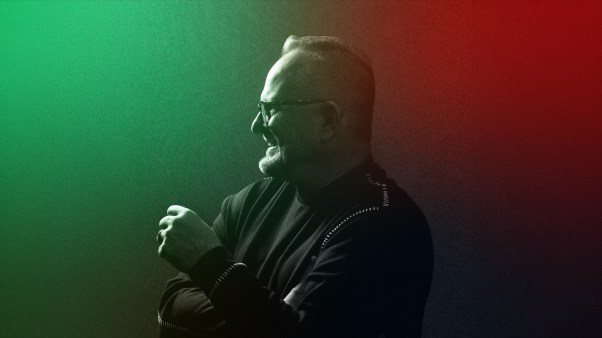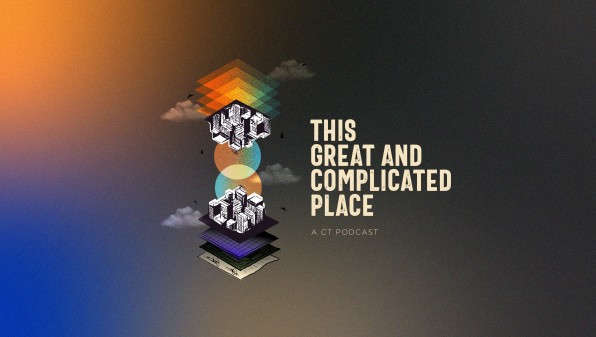Conservative evangelical Christians have sometimes been eager advocates of the modern campaign to “keep Christ in Christmas” and preserve the traditional religious meaning of the holiday.
There’s one major problem with this campaign: The original religious message behind the American Christmas was not evangelical at all.
Instead, it was the creation of Unitarians, Episcopalians, and other liberal Protestants who had little interest in several key tenets of the evangelical understanding of the gospel.
Those of us who are evangelical in our faith can still have a merry Christmas. But if we want to do so in a way that foregrounds the gospel, we may have to discover a new approach to the holiday that does more than simply preserve the old.
Here’s the story.
Among the 17th- and 18th-century American colonists, the Christians who most closely resembled modern evangelicals uniformly refused to celebrate Christmas. The New England Puritans were strong opponents of Christmas, not only because of its connections with Roman Catholicism but also because, in 17th-century England, it had become a day known more for excessive drinking and gaming than for any religious observance.
Even at the beginning of the 19th century, long after the Puritan religious fervor had largely dissipated in New England, Congregationalists in the region continued the Puritan practice of not observing Christmas in their homes or their churches. Massachusetts, which in the Puritan era punished those who dared to celebrate Christmas, did not recognize it as a state holiday until 1855.
Though perhaps slightly less hostile to Christmas than the Puritans, the major American evangelical denominations of the late 18th and early 19th century likewise showed no interest in the holiday. Baptist, Methodist, and especially Presbyterian churches of the early 19th century shunned the idea of Christmas services.
It was therefore left to the Episcopalians to celebrate Christmas—which they proudly did. In the South, they celebrated the same way they did most holidays: by drinking copious amounts of alcohol and shooting guns. And in the Northeast, they did so by going to church.
As Penne Restad describes in Christmas in America: A History, early 19th-century New England Congregationalist children whose parents ignored Christmas marveled when the Episcopalians in their towns wrapped their church buildings in garlands of greenery and gathered to sing on Christmas morning. Some of them expressed a longing for a little of this Christmas cheer. The yearning became more acute when German Lutheran immigrants brought new Christmas traditions to America—especially the Christmas tree and Santa Claus.
At that moment, anti-Calvinists in the Northeast decided the time was right to bring some Christmas jollity into their communities while avoiding the excessive drinking and loud revelry of holiday celebration elsewhere. It was time, in other words, to invent a new, family-friendly, explicitly religious tradition—but in ways that Calvinists and other evangelicals wouldn’t have necessarily found reassuring.
Nearly all the promoters of Christmas in the early 19th century were Episcopalians or Unitarians who saw in the holiday an antidote to the allegedly dour Congregationalism they identified with Puritan Calvinism. The blessings of Christmas, they thought, must be universal, just as they believed God’s offer of salvation was. And Christmas must be a time of joy, not a moment to reflect on the sinful condition of humanity.
Some American promoters of Christmas were influenced by the popular British author Charles Dickens, whose story A Christmas Carol portrayed the holiday as a time when the cantankerous, miserly Ebenezer Scrooge discovered the joy of generosity.
Dickens, who was raised a nominal Anglican but joined a Unitarian chapel as an adult, believed in the humanitarian teachings of Jesus. He used his fiction to promote the idea of Christmas as a day for all people to follow their better impulses, become a little less selfish, and adopt a charitable disposition toward all.
Unitarians, some of the most anti-Calvinist of the early 19th-century Protestants, were optimists about the possibility of moral reform through human effort. They envisioned Christmas as a day that would unite Christians across the theological spectrum and encourage loving attitudes that would improve society.
In Dickens’s A Christmas Carol, Scrooge experiences what amounts to a Unitarian Christmas conversion: He becomes a better man. If Jesus is necessary for such a conversion, he’s needed only as an inspiring moral example of human possibility, not as an atoning savior.
Unitarians, after all, didn’t accept the idea of substitutionary atonement, and they likewise rejected the idea of Jesus’ divinity and all aspects of Trinitarian theology. Yet many became passionate advocates of Christmas in the mid-19th century because they saw in the holiday a story of God’s love for the world and the optimistic hope of universal human brotherhood.
The best-known 19th-century Christmas hymns penned by Unitarians have become beloved classics because they appeal to our longing for a world of love, beauty, peace, and justice.
“O Holy Night,” translated from the French into English by the liberal Massachusetts Unitarian and antislavery advocate John Sullivan Dwight in 1855, honors Jesus as a great teacher of social ethics and emancipation—a popular theme among New England abolitionists in the years leading up to the Civil War.
Likewise, another 19th-century New England Unitarian Christmas hymn, Henry Wadsworth Longfellow’s “I Heard the Bells on Christmas Day,” expresses optimism in the midst of the Civil War that God’s peace and righteousness will eventually prevail.
Christmas hymns penned by 19th-century Episcopalians gave much greater recognition to Jesus’ divinity and saving power than Unitarian carols did. But rather than highlight Jesus’s saving work on the cross (as evangelicals wanted), they presented a more peaceful, quiet image of the sleeping Jesus who could be encountered through tranquil contemplation.
This was the message of “O Little Town of Bethlehem,” written by Boston Episcopal rector Phillips Brooks in 1868, and “Silent Night,” which was translated into English by a New York Episcopal minister in 1859.
By contrast, early 19th-century evangelical Protestant hymnals had focused far more attention on the atoning death of Jesus than on his birth. And the few hymns that did touch on his birth—such as Charles Wesley’s “Hark the Herald Angels Sing”—gave extensive treatment to Christ’s saving mission, his kingship, and the “second birth” that he would bring to humanity.
Yet in the late 19th century, many evangelicals who had not celebrated Christmas in their churches began singing the Episcopal Christmas hymns as eagerly as anyone else. By 1870, when Christmas officially became a federal holiday in the United States, Protestant churches across the theological spectrum observed the day with at least a Christmas sermon—if not an entire Christmas service.
Without realizing it, then, many evangelicals absorbed much of the theology of the 19th-century Unitarians and Episcopalians because it pervaded most of the traditional hymns and Christmas readings they had come to adore.
Yet over the course of the 20th century, the “Christmas spirit” became increasingly separated from the historical Jesus in American public life.
In the mid-19th century, even the Unitarians affirmed the teachings of the historical Jesus and believed they would lead to a happier, more emancipated society. But by the mid-20th century, some public figures who welcomed the chance to talk about the “Christmas spirit” shied away from any specific invocation of Jesus.
In numerous Christmas messages, for example, US presidents echoed the phrase “peace on earth and good will to men.” But it was often separated completely from any mention of Jesus Christ.
Today, even the oldest Americans can’t remember a time when public expressions of “Merry Christmas” were grounded in anything more substantive than an ahistorical, vaguely Unitarian wish for a universal “Christmas spirit” of peace and goodwill.
Evangelicals who believe in the gospel of the Incarnation cannot therefore find much comfort in public campaigns to replace “Happy Holidays” with “Merry Christmas” or set up creches in the town square. What we need is not a return to the 1950s or even the Victorian era but rather a recovery of wonder at the incarnate God coming to earth in the form of a baby in order to save humanity.
For better or worse, evangelical Christians didn’t play much of a role in creating American Christmas, and as a result, the form of the holiday wasn’t very evangelical. But that’s okay, because it points to the gospel anyway—not by what it says but by what it’s missing.
The 19th-century Unitarians who wanted Christmas because they longed for better social relations were right to earnestly desire this aspect of the kingdom of God. But as evangelicals know, for this to work, people need a Jesus who was just as divine as he was human, and they need his atoning death.
The Victorian Episcopalians who became sentimental in their reflection on the sleeping Christ child were right to bow their knee to the baby in the manger. But maybe the night when he entered a world of pain and sin was a lot less silent than they imagined.
And the 20th-century liberal Protestants who tried to appeal to a universal “Christmas spirit” were right about the invisible power at work on that day. But maybe it could be better identified as the Holy Spirit rather than as some universal human beneficence that could save the world apart from Jesus.
This Christmas, believers in the gospel will gather together. They’ll marvel at the incarnate Son of God, whose entry into the world made possible the “Christmas spirit” that numerous people across the theological spectrum have longed for.
But Christ’s birth marks more than a humanitarian project or a sentimental story. It’s about the ultimate divine gift to a sinful world—a world that in the 19th century, as in the first and the 21st centuries, comprehended it not.
Daniel K. Williams is a professor of history at the University of West Georgia and the author of Defenders of the Unborn: The Pro-Life Movement Before Roe v. Wade.











